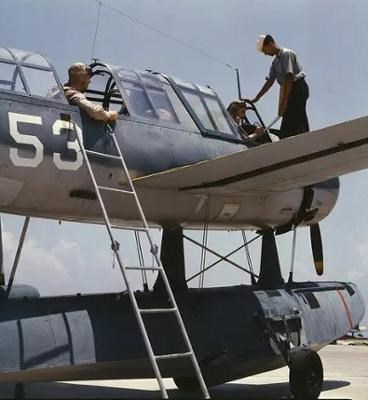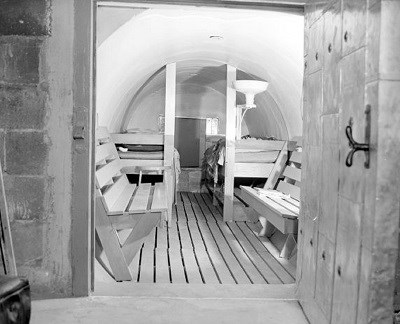***The 2025 Nomination Period is Now Closed ***

Office of War Information Poster No. 52. Library of Congress.
States or Territories currently without designated American World War II Heritage Cities.
During the nomination period, any jurisdictions in the locations below that meet the criteria are eligible to apply for designation as an American World War II Heritage City.
- Alaska, American Samoa
- Colorado
- Guam
- Hawaii
- Idaho, Illinois
- Kentucky
- Maine, Minnesota
- New Hampshire
- Oregon
- Puerto Rico
- South Dakota
- U.S. Virgin Islands
- Vermont
- West Virginia
Visit our World War II Heritage Cities page to see the designated American World War II Heritage Cites.
Can a state or territory have more than one designated American World War II Heritage City?
No
Section 9007 (a) of the John D. Dingell Jr. Conservation, Management, and Recreation Act of 2019 allows only one designation per U.S. state or territory.
During the nomination period, any jurisdictions in a state or a territory that meet the criteria can be nominated. A state or territory may have multiple nominations; however, only one will be chosen for designation as an American World War II Heritage City. Once a designation has been made, the state or territory is removed from the eligibility list.
On this Page:
Who Can Apply / Criteria for Designation / How to Apply / Where to Send Nominations / Review Process / Contact Information
Who Can Apply
Any local government jurisdiction located in a U.S. state or territory that doesn't already have an American World War II Heritage City. See the list above for currently eligible states and territories.
Note: An entire state or territory cannot apply for designation. Only a local government jurisdiction within a currently eligible state or territory may be designated.

Photo date: 1942. Library of Congress. LC-USW36-391 [P&P]
Local Government Jurisdiction
A local government jurisdiction ("jurisdiction") is a locally managed populated area with a defined political border. It falls under a state or territory government. Jurisdictions include, but aren't limited to, counties, parishes, municipalities, cities, townships, boroughs, towns, and villages.
While the designation is World War II Heritage "City”, any jurisdiction in an eligible state or territory that meets the criteria can be nominated for designation.
Examples: Northfield, Vermont (town) a primary producer of wool for the U.S. military; Denver, Colorado (city) which had multiple military sites, defense manufacturing companies.
See current designations at World War II Heritage Cities.
Nominating Two or More Jurisdictions Together
Two or more jurisdictions can apply together in a joint nomination, as long as:
- The jurisdictions are contiguous and/or overlap. Note: Joint nominations with either discontiguous jurisdictions or ones that do not overlap will not be accepted.
- The nomination is endorsed by each jurisdiction's highest locally elected official.
Examples: Polk and Benton Counties in Oregon. The counties share a contiguous border and were together the home of Camp Adair. The Camp was a large military training facility that had a great impact on surrounding communities and the home front; the City and County of Honolulu, Hawaii where the initial attack on the US took place.
See current joint application designations at World War II Heritage Cities.
Criteria for Designation
Applicants must meet both criterion 1 and 2 in order to be considered for designation.
-
Contributions by a city and its environs to the World War II home-front war effort, such as contributions related to: *
- Adaptations to wartime survival
- Civil defense preparedness
- Defense manufacturing, such as ships, aircraft, uniforms, and equipment
- Production of foodstuffs and consumer items for Armed Forces and home consumption
- Volunteer participation
- War bond drives
- Personnel serving in the Armed Forces, their achievements, and facilities for their rest and recreation, or
- The presence of Armed Forces camps, bases, airfields, harbors, repair facilities, and other installations within or in its environs.
-
Achievements by a city and its environs to preserve the heritage and legacy of the city’s contributions to the war effort and to preserve World War II history, such as contributions related to: *
- Establishment of memorials to area men who lost their lives in service
- Establishment of museums, parks, and markers
- Organizing groups of veterans and home-front workers and their recognition
- Presentation of cultural events such as dances, plays, and lectures
- The identification, preservation, restoration, and interpretation of World War II-related structures, facilities, and sites
- Public relations outreach through the print and electronic media, and books, and
- Recognition and ceremonies remembering wartime event anniversaries
See the American World War II Home Front Heritage City Criteria Essays to learn more about the subcategories under criterions 1 and 2.
* Does my jurisdiction have to meet each of the subcategories under criterions 1 and 2?
No
The subcategories are not a list of requirements. Jurisdictions are required to have activities under both criterion 1 and 2, but they don't have to meet each subcategory. The subcategories are intended to be examples of specific home front and commemoration topics. These topics can be used to help describe jurisdictions' qualifications for designation as American World War II Heritage Cities.
There are no requirements for jurisdictions to have specific numbers of activities or subcategories. However, when nominating jurisdictions it's best to briefly describe activities under as many subcategories as possible that are significant to the location. This can help support jurisdictions' qualifications for designation.
Activities that don't fall under a Subcategory
Jurisdictions can also include WWII home front history and commemoration activities in their nominations that aren't specifically listed as subcategories, but that still apply under criterions 1 and 2.

Wayne State University, Walter P. Reuther Library
How to Apply
The process begins when:
Two or more jurisdictions nominating together will submit one joint nomination.
A nomination must include:
- A cover letter addressed to the National Park Service Director and signed by the jurisdiction's highest locally elected official. For multiple jurisdiction nominations the cover letter(s) must be signed by each jurisdiction’s highest locally elected official.
- A brief descriptions of how the jurisdiction meets criterions 1 and 2 in the Criteria for Designation (see above).
A nomination can also include other optional materials such as:
- Endorsements from each jurisdiction’s members of Congress, delegate(s), or resident commissioner (strongly recommended).
- A map showing that home front and commemorative activities occurred within the jurisdiction's boundaries (strongly recommended). Any format, such as pins on a Google map or a hand-drawn markup on a print map, is acceptable.
- Photographs and historic images of commemorative events and activities saved in either pdf, jpeg/jpg, gif, tiff, or png digital file format.
- Images of interpretive signage, digital brochures, fliers, websites, etc.
- Existing program materials that elaborate on how a jurisdiction meets the Criteria for Designation or supports the nomination.
- Other letters of support.
No more than five (5) optional items in total, please.
Disclaimer
The National Park Service (NPS) may use application materials for non-commercial display purposes such as posting on the NPS website (nps.gov), NPS social media forums, publication in hardcopy or digital program brochures, and other American World War II Heritage City Program informational materials in accordance with U.S. copyright Fair Use laws and regulations.
Financial Requirements
There are no financial requirements either when a jurisdiction is applying for designation or after a jurisdiction is designated as an American World War II Heritage City.
Where to Send Nominations
Nominations should be emailed to AWW2HC@nps.gov.
Review Process
Once the nomination period has ended, the National Park Service (NPS) will acknowledge receipt of complete nominations and review them within three (3) months. Recommendations are then submitted to the Director of the NPS.
Contact Information
For more information email aww2hc@nps.gov or call 202-354-6991.
Last updated: May 5, 2025
